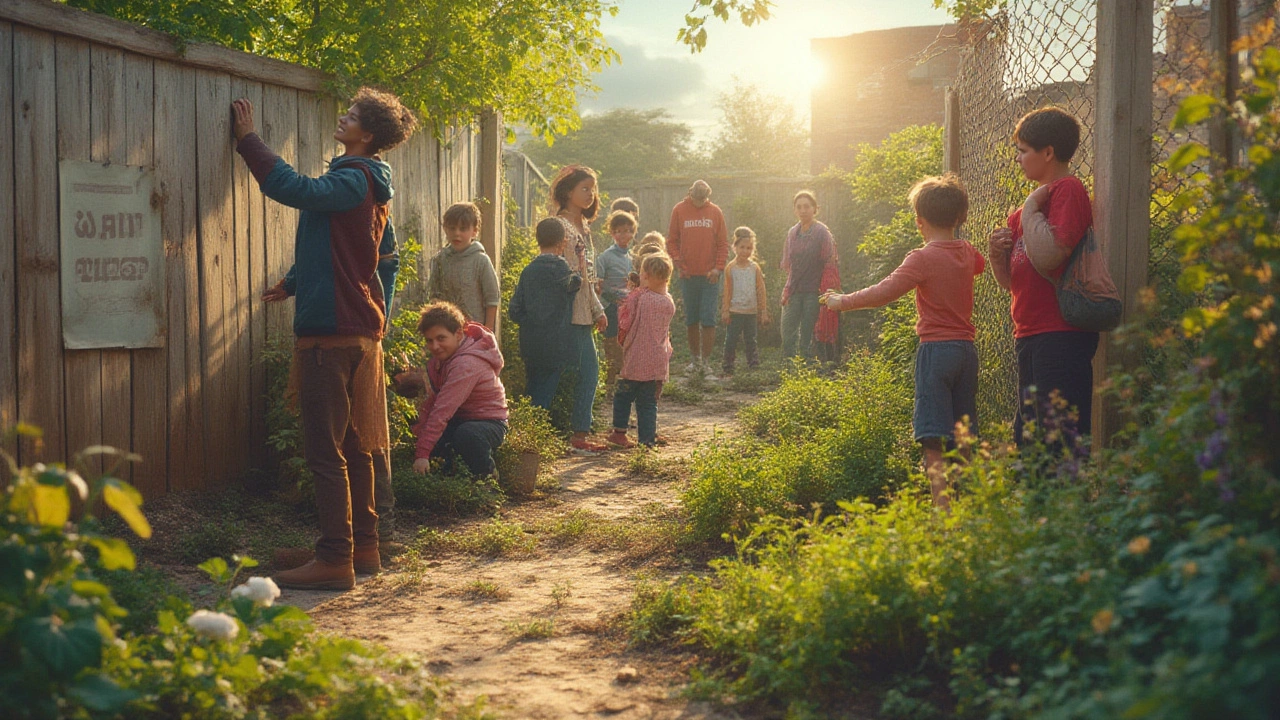Picture this: more people than ever say they care about their community, but the actual number signing up to help is shrinking—not inching, dropping off a cliff. Between 2017 and 2024, American volunteer rates fell from 30% to a historic low of just under 22%, according to the U.S. Census and AmeriCorps Volunteering and Civic Life survey. Charities everywhere are raising alarms, yet fewer hands show up. So, what's stopping people? The reasons aren't always the ones we expect, and they're changing faster than nonprofits can update their wish lists. The real story behind the fall of volunteerism is tangled up in new social norms, tech habits, and a shift in how we value our time. If you're wondering why the food banks, shelters, and events in your city are sounding desperate, it's not just your neighborhood. This is happening all over.
What’s Really Driving Down Volunteering?
First, let's ditch the polite excuses and look at what the data actually says. Time, you'd guess? Sure, but that's not the full picture. Studies by the Do Good Institute at the University of Maryland found that about 60% of Americans say they want to volunteer, but less than a quarter actually do. What's in the gap? Work is more demanding—now, even regular office jobs often expect "above and beyond" effort. Nearly 38% of workers now report putting in unpaid overtime every week, up sharply since 2018. The line between work and personal life has blurred, especially after remote work took off during the pandemic. People are doing chores or answering emails at weird hours, which means community work gets pushed to "someday" (aka, never for most).
There's also the problem of "burnout with a cause." After waves of disaster response—think about COVID-19, hurricanes, wildfires—many people helped out, but then just…stopped. Being overwhelmed by constant crises actually pushes some to drop all commitments, a trend experts call "compassion fatigue." Combine that with a cost of living mess: gas, groceries, housing—everything costs more in 2025. Volunteering often means spending your own money for transport or supplies, and up to 76% of volunteers report dipping into their own funds regularly. Inflation eats into their willingness to give without compensation.
Social media isn't helping. TikTok and Instagram have made "slacktivism"—a tap, share, or hash-tagged rant—the new badge of concern. Liking a post or resharing a campaign feels almost like doing something, but it doesn't fill soup kitchen shifts. National surveys point out that the number of people who describe themselves as “interested in causes” is up, but actual physical volunteering is flat or dropping. Physical and emotional barriers stack up: after years of pandemic caution, some still worry about catching something in crowded spaces. Others don’t feel safe or are unsure what to expect—especially first-timers or people from minority backgrounds who don’t always see themselves reflected in the groups running things.
Last point—organizations themselves sometimes make it too hard. Did you try to volunteer online lately? Application forms are often long and confusing. Some charities require background checks that take weeks. Orientation sessions might eat up your Saturday. This all adds friction, and, in a TikTok world, people bail at the first hassle. Young adults, especially, aren't shy about dropping off if they’re not made to feel welcome or impactful right away.

The Numbers Speak: Volunteerism in 2025
People love data—so let’s put the facts on the table. Here’s where things stand, based on the latest credible research. In the U.S., the AmeriCorps Volunteering and Civic Life in America Report published in 2024 showed these chilling figures:
| Year | Volunteering Rate (%) | Estimated Volunteers (millions) |
|---|---|---|
| 2017 | 30.3 | 77.4 |
| 2020 | 23.2 | 60.7 |
| 2022 | 23.1 | 60.4 |
| 2024 | 21.8 | 57.1 |
That’s more than 20 million fewer volunteers since 2017—just in the States. The UK is seeing similar trends. The National Council for Voluntary Organisations reports that weekly volunteering by adults dropped from 23% in 2019 to just 14% in 2023. Australia and Canada? Both saw double-digit percentage drops since 2019.
The age breakdown is revealing. Seniors (65+) used to volunteer more than anyone—a whopping 35% rate a decade ago. Now, it’s under 24%. Young adults (18–24) still volunteer less, hovering around 14%. The hard truth? Every generation is bailing, but older folks are dropping out fastest. That loss hits hard. Retired volunteers bring not just warm bodies, but deep institutional memory and reliability. This is a big reason why long-term causes—like food banks or literacy tutoring—are feeling the most pain.
Another key number: according to Independent Sector, the estimated economic value of a U.S. volunteer hour in 2024 was $32.82. If volunteering vanishes, that’s billions in lost community value. Nonprofits say more than two-thirds now struggle to fill ongoing shifts, not just special events. More groups report cutting services or waitlisting people who need help, just because they can’t staff their programs.
So how do people volunteer now? The biggest drop is in "regular" volunteers—those who showed up every week or month. Episodic or one-time-only volunteering has gone up a little, mostly connected to big events (like Earth Day cleanups or holiday meal prep). Virtual volunteering (helping from home, doing web design, mentoring online) is still a blip—under 10% of all service hours, despite all the hype. Turns out, most causes still need humans on the ground.

How Can We Turn Volunteerism Around?
All this sounds like doom and gloom, but some solutions are actually working in cities and towns that are beating the "volunteer drought." First, make things easy. Nonprofits that switched to true "drop-in" options—where you don’t need a three-week application process and can just show up—report sharper increases in new volunteers under 40. Some are using text alerts or app-based signups with reminders. This is a page straight out of how you book an Uber or a fitness class: frictionless, quick, and on your terms.
Recognition goes a long way. Social science research by points of light in 2024 showed that volunteers who got prompt thanks—public shoutouts, certificates, or just lunch—were over 40% more likely to come back. Charities that give people some say in what they do, or pair them up with friendly guides, see better retention. Another move that works: "micro-volunteering" (shifts under an hour) for tasks like writing notes to seniors or packing kits. These aren't just easy; they fit busy schedules and actually draw people who would never sign up for a big, ongoing commitment.
Businesses are stepping up. Nearly 60% of large U.S. companies now offer paid volunteer hours or "service days." Where employers push it, participation soars. One big-box retailer, for instance, reported more than 1,000 volunteers for community cleanups this spring after they doubled paid hours for volunteering. It’s not just a good look—it’s building skills, making employees happier, and helping recruitment. If your company isn’t doing this, maybe nudge HR.
So what can you actually do if you feel stuck or unsure how to help? Try some of these tips:
- Look for "one-time" or "no-commitment" opportunities in your zip code. Many food banks or parks departments run friendly shifts open to drop-ins.
- If you have special skills (graphic design, translation, web work), reach out to smaller nonprofits. They often need help but lack budget.
- Bring a friend. Data shows people are more likely to stick with volunteering when they start with someone they know.
- Try "micro-volunteering"—many apps now offer ways to pack kits, write cards, or complete online tasks for a good cause, often in under an hour.
- If you can't help in person, look for remote mentoring or tutoring—anything from teaching English online to helping job seekers with resumes.
- Push your employer to offer paid volunteer hours. Share examples from companies that do it, and point out the benefits for morale and team-building.
- Don’t get discouraged by slow responses. Smaller groups are often overwhelmed and run by just a couple of staff.
The truth is we’re in a weird moment for volunteerism. People care, but are stretched like never before. If organizations can ditch the red tape and talk like real humans, and if would-be volunteers push past their own hesitation—even for a single hour—small wins add up. Maybe you won't fix the whole system, but one shift, one meal, one friendly call really does move the needle in a world that's feeling thin on kindness right now.
